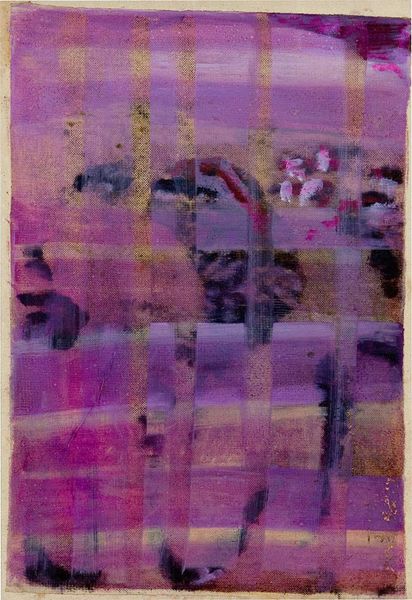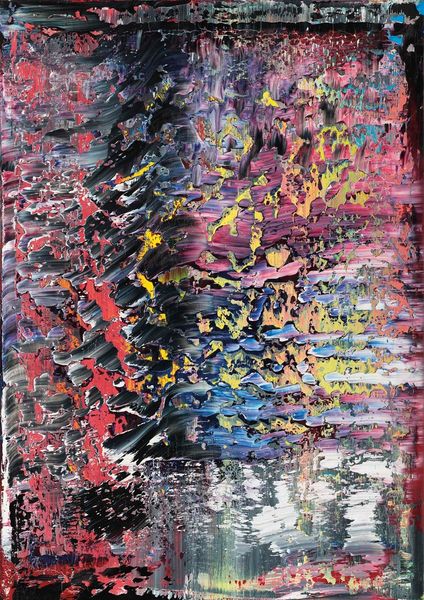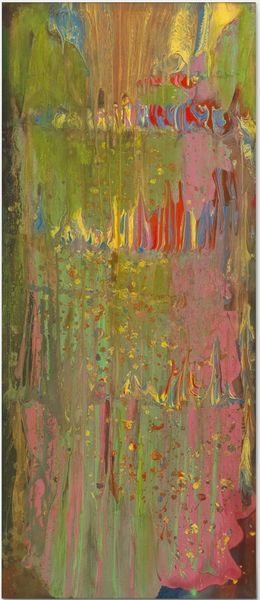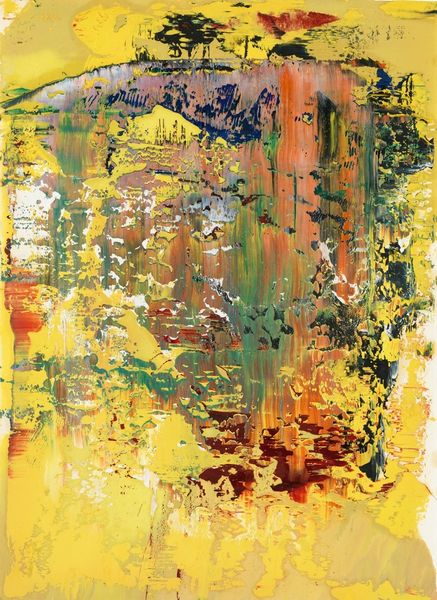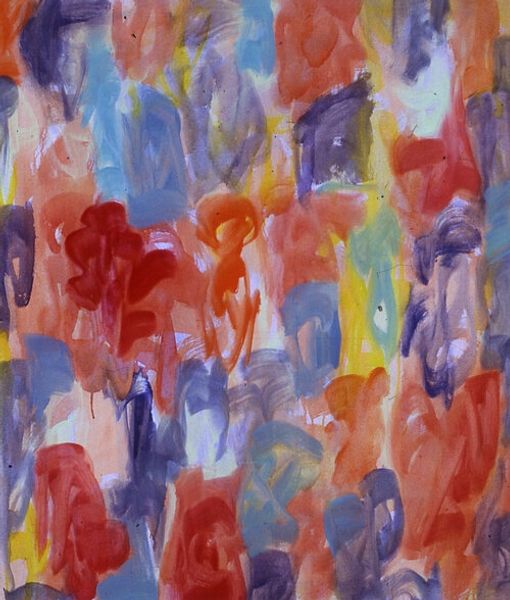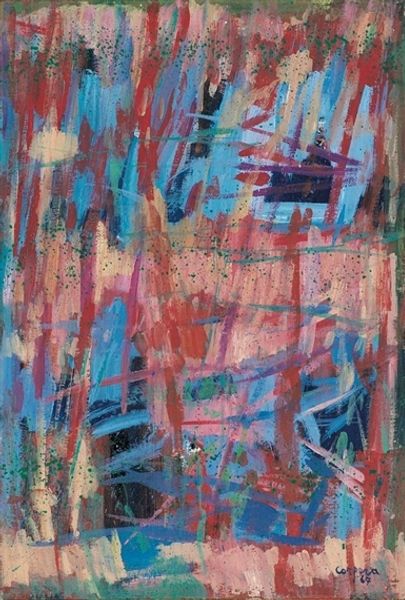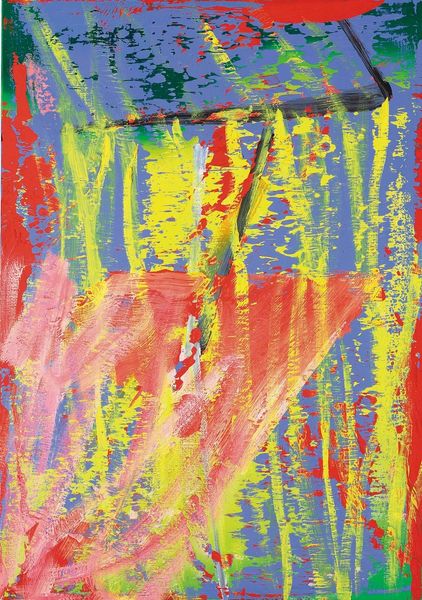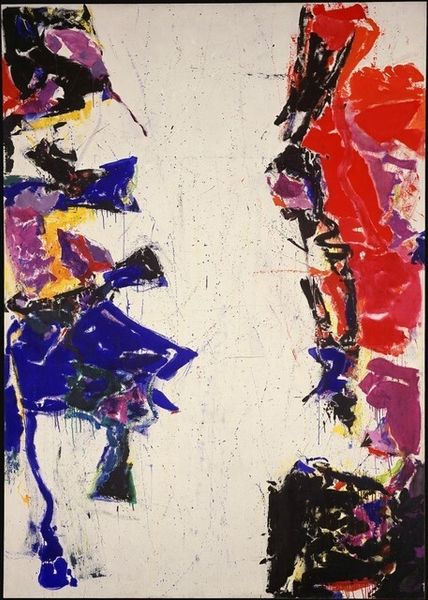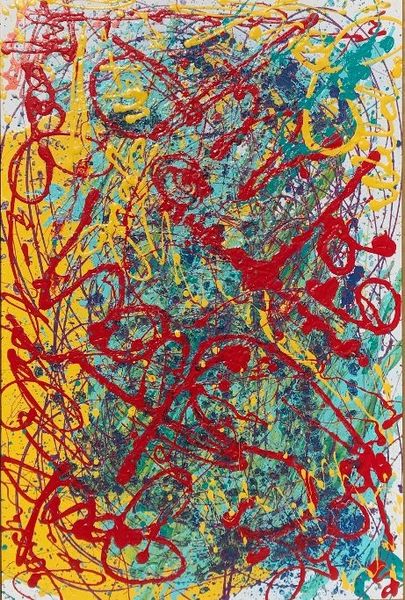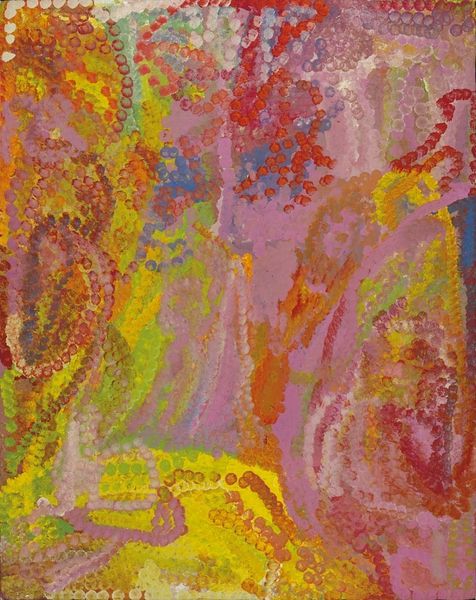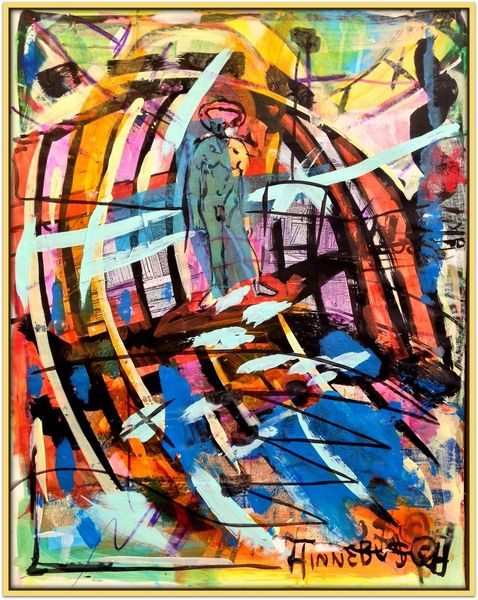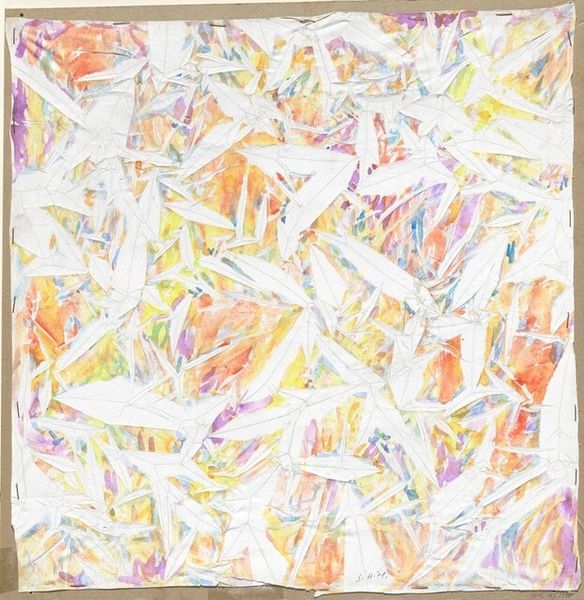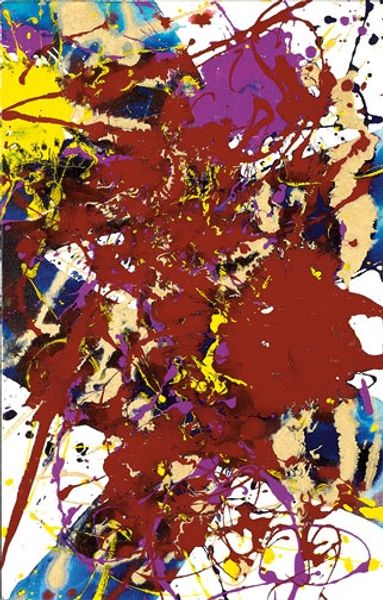
monotype, mixed-media, print, acrylic-paint
#
portrait
#
abstract-expressionism
#
monotype
#
abstract expressionism
#
mixed-media
#
abstract painting
# print
#
acrylic-paint
#
figuration
#
paint stroke
Copyright: National Gallery of Art: CC0 1.0
Curator: Here we have Corita Kent’s "At Cana of Galilee," a mixed-media monotype and acrylic-paint print from 1952. First impressions? Editor: It feels… festive, yet a little chaotic. All those faces emerging from a mist of pinks and purples, like memories bubbling up. A bit frenetic, if I'm honest, like trying to hold onto a feeling that keeps slipping away. Curator: Precisely. Kent uses abstraction here to express the dynamism of the biblical wedding feast, layering figures and symbolic elements—the wedding guests, goblets, the couple, and presumably Jesus—to evoke not a static scene, but a moment of communal transformation and almost giddy energy. It is as much about her personal feeling towards the holy moment than a direct representational take. Editor: Given Kent’s activist work, particularly her engagement with social justice and religious themes, this reading of “transformation” takes on richer meanings. Water into wine, yes, but perhaps also turning despair into hope, inaction into action? It reminds me of the power of collective joy to spark revolutionary change. This work really plays on religious art’s potential to connect to both our spiritual and our material lives. Curator: Exactly! And don't you think the frenetic style, while at first glance, chaotic, mirrors the messy, unpredictable nature of social change itself? Maybe that bubbling chaos can serve as a metaphor for the energy born of dissent or even discomfort... Editor: It's definitely present. What fascinates me, though, is how Kent takes a traditional biblical scene—often depicted in very hierarchical ways—and almost democratizes it. Everyone seems equal here, bathed in the same ecstatic hues, faces melting into each other, sharing in a common spiritual experience. Curator: She encourages viewers to look, seek, and imagine; not simply to recognize a familiar story. Editor: Absolutely. It’s a powerful testament to how art can make familiar narratives fresh, making the holy both messy and deeply, undeniably human. Curator: Leaving you to wonder, who *wouldn't* want to go to that wedding?
Comments
No comments
Be the first to comment and join the conversation on the ultimate creative platform.
